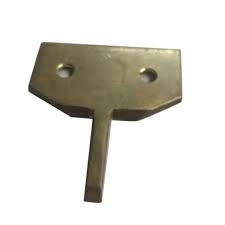
The primary role of a hammer head is to transfer kinetic energy into the target surface. To accomplish this effectively, it needs to be made from materials that are both extremely hard and resistant to wear and deformation. Forged steel, alloy steel, and heat-treated carbon steel are commonly used materials. The choice of material depends on the specific application—some hammers are made with softer metal heads to avoid damaging delicate surfaces, while others require hardened heads to withstand heavy blows on metal or stone.
There are several types of hammer heads including sledgehammer heads, claw hammer heads, ball-peen hammer heads, and cross-peen heads. Each type is engineered for a unique purpose. For instance, a sledgehammer head is heavy and broad for demolition work, while a ball-peen hammer is designed for shaping metal and riveting. The shape, weight, and balance of the hammer head directly influence its effectiveness and safety in operation.
Modern hammer heads are sometimes equipped with advanced features like anti-vibration cores, non-slip surfaces, or replaceable striking faces. These improvements aim to increase efficiency while reducing user fatigue and injury. In industrial applications, hammer heads are part of larger mechanical systems and may be pneumatically or hydraulically driven to produce automated high-speed impacts.
Routine maintenance and inspection of hammer heads are vital in prolonging their life and ensuring safe use. Signs of wear such as cracks, chips, or mushrooming edges can pose risks and should be addressed immediately. In heavy machinery, modular hammer head assemblies allow for quick replacements to minimize downtime and keep operations running smoothly.
✅ Extra Points:
-
Material Options: Hardened steel, forged alloy steel, and sometimes brass or copper for non-sparking use.
-
Applications: Used in construction, metalworking, automotive repair, blacksmithing, and demolition.
-
Ergonomic Design: Modern hammer heads are often paired with ergonomic handles for better control and reduced strain.
-
Customization: Can be tailored in size, weight, and face shape based on industry-specific needs.
-
Safety Tip: Always use hammer heads that match the handle type and job requirement to prevent accidents.
We Hope You Find What You are Looking for
Hammer heads are one of the most common and crucial beating parts used in various manual and mechanical operations. As the striking end of a hammer tool or machine, they are designed to deliver concentrated force through repeated impact. These parts come in a variety of shapes and sizes, depending on the type of work they are meant for—ranging from delicate carpentry to heavy-duty metal forging or demolition.
Frequently Asked Questions






